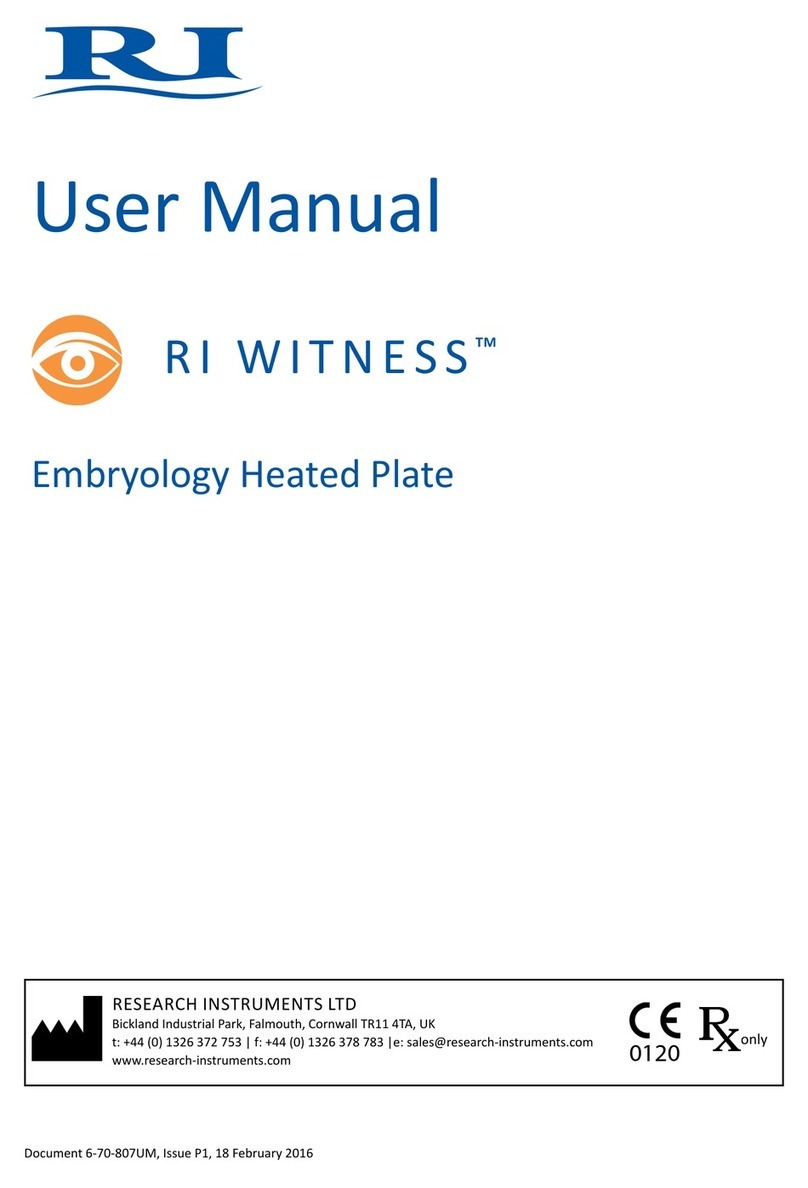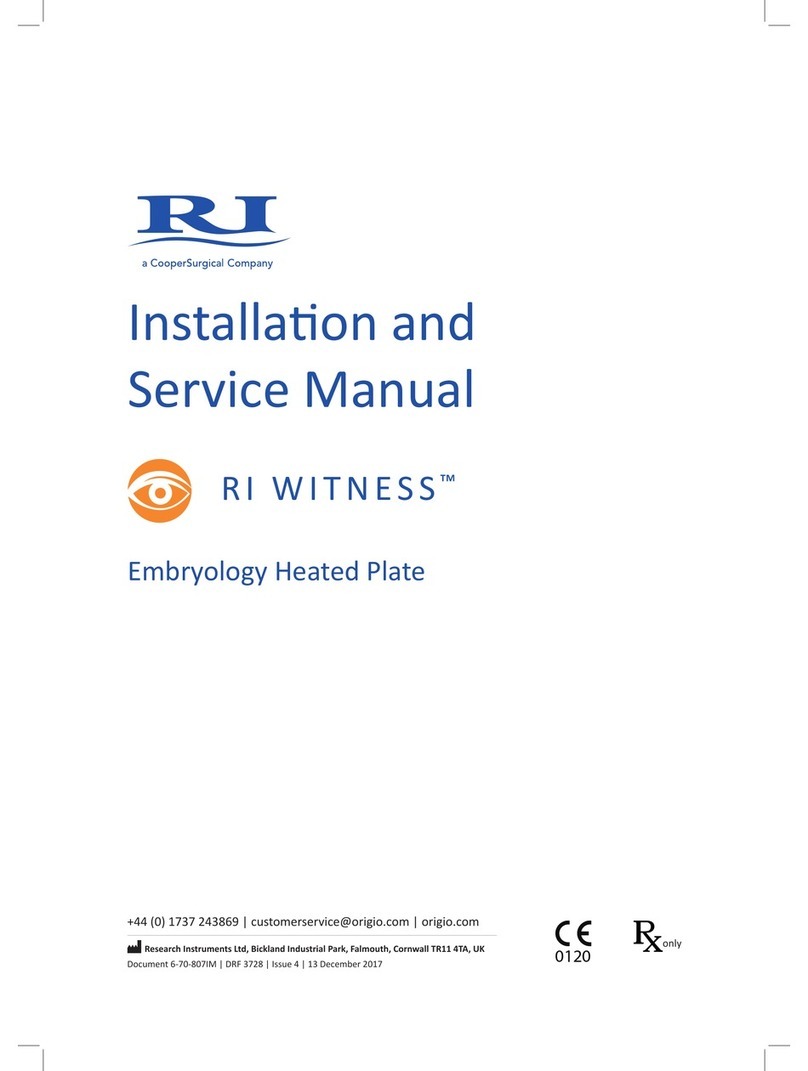disassemble or modify any part of the RI Witness Embryology Heated plate, or
substute any component for any other. Doing so may result in damage to samples. This
voids the warranty and/or service contract.
To avoid the risk of electric shock, this equipment must only be connected
to a supply mains with protecve earth.
use the power cable and power supply adaptor supplied with the system.
The cable to the power supply is the ‘disconnect device’ for this equipment. To remove all
electrical power from this product, disconnect the power cable from the electrical outlet.
Equipment should be posioned so as to allow easy access to the power cable. The appliance
coupler or mains plug is used as the disconnect and must remain readily operable.
Not to be used in a paent environment.
The system should be operated by qualied and trained personnel only.
This symbol indicates cauonary text which should be followed to avoid injury to users
or damage to samples.
Refer to Guidance and Manufacturer’s Declaraon Tables in this secon of the
User Manual for guidance on the environment suitable for this device.
Use of this equipment adjacent to or stacked with other equipment should
be avoided because it could result in improper operaon. If such use is necessary, this
equipment and the other equipment should be observed to verify that they are operang
normally.
The temperature of the plate should not be more than 1.5ºC from the
displayed temperature at any me. A temperature of more than 1.5ºC will cause the
temperature inside the dish to change more rapidly and samples are at risk of over-
heang. In this instance samples should be removed from the plate immediately.
We recommend the plate temperature be monitored periodically using a calibrated
thermocouple thermometer.
There are no replaceable parts supplied with this device. Should any parts
need to be replaced, contact RI or your distributor.
Use of accessories, transducers and cables other than those specied or
provided by the manufacturer of this equipment could result in increased electromagnec
emissions or decreased electromagnec immunity of this equipment and result in
improper operaon.
Portable RF communicaons equipment (including peripherals such as antenna
cables and external antennas) should be used no closer than 30 cm (12 inches) to any
part of the Embryology Heated Plate, including cables specied by the manufacturer.
Otherwise, degradaon of the performance of this equipment could result.





























